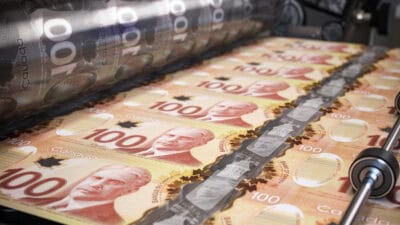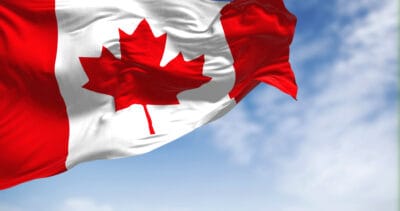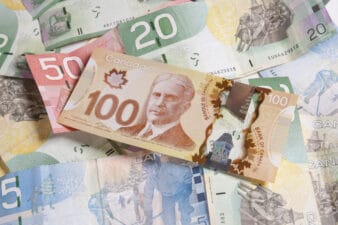Economists were taken aback by the Bank of Canada’s (BOC) decision on mid-week to raise its policy rate by a full percentage point instead of 0.75%. Governor Tim Macklem defended the action saying the central bank had to act now and front-load its rate-hiking campaign, because they can’t allow an extended period of high inflation.
Macklem said, “We are increasing our policy interest rate quickly to prevent high inflation from becoming entrenched. If it does, it will be more painful for the economy — and for Canadians — to get inflation back down.”
Meanwhile, the market pullback continues with the TSX declining for four consecutive days since July 8, 2022. Only three of the 11 primary sectors are in positive territory year to date. The red-hot energy sector is losing steam, but the consumer staples sector has gained (+3.84%) the most in five days.
Inflation expectations
Stephen Gordon, an economist at the University of Laval, said the BOC has miscalculated the speed with which inflation was going to heat up. The policymakers are in catch up mode and frantic to alleviate inflationary pressures. However, Gordon added that the supersized rate hike was warranted in the face of unprecedented challenges.
The BOC doesn’t expect the official inflation rate to come down anytime soon. However, the Feds forecast it to be 3% until next year before returning to its 2% target until 2024. Macklem expects economic activity to slow due to moderate global growth, as tighter monetary policy works its way through the economy.
Consumer-defensive stocks
As mentioned earlier, consumer staples stocks are on a roll. Loblaw (TSX:L) and Metro (TSX:MRU) displays resiliency amid the market downturn. The former is up 18.25% year to date, while the latter outperforms with +7.04%. Their dividend yields are modest, but the payouts should be safe and sustainable.
Galen G. Weston, chairman and president of Loblaw, said, “We have begun the year with momentum in our core retail businesses, a clear strategic agenda, and continued traction in our growth initiatives.” In Q1 2022, the $40.97 billion food and pharmacy company reported 3.3% and 39.6% growth in revenue and net earnings, respectively, versus Q1 2021.
Weston added, “Loblaw demonstrated consistent operating and financial results, reflecting the strength of its portfolio of businesses.” Management also increased its dividend for the 11th consecutive year. The current share price is $121.73, while the dividend yield is 1.38%.
Like Loblaw, Metro operates in the food and pharmaceutical sectors. If you invest today ($7.48 per share), the dividend yield is 1.56%. In the first half of fiscal 2022 (six month ended March 12, 2022), net earnings of the $17.29 billion company increased 7% to $405.8 million versus the same period in fiscal 2021.
Eric La Flèche, Metro’s president and CEO, said the impressive quarterly results were achieved in a challenging operating environment marked by the Omicron variant and labour shortages throughout the supply chain. He noted the 11.5% and 11% increases, respectively, in food and pharmacy same-store sales in the first eight weeks of the second quarter.
Assessment is ongoing
The Bank of Canada will continue to assess the economy and inflation. However, more rate hikes are possible if the inflation rate remains around 8% in the coming months.







